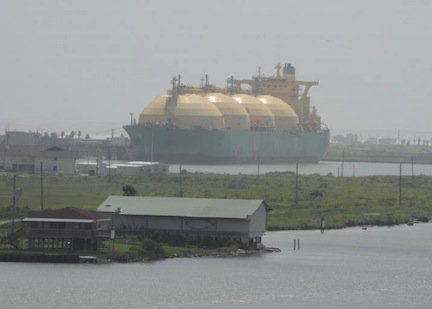The following is text of a news release from Transport & Environment (T&E):
(BRUSSELS, Belgium) — Rolling out liquefied natural gas (LNG) infrastructure for shipping in Europe would cost $22 billion and deliver, at best, a 6 percent reduction in ship greenhouse gas emissions by 2050 compared to the replaced diesel, a new independent study for Transport & Environment by the UMAS consultancy finds. To date, Europe has spent $500 million on LNG infrastructure for refueling ships.
These meager emissions savings would likely be canceled out by the growth of maritime trade, even before possibly higher rates of methane slip are considered, according to the research. A recent U.S. study found methane slippage rates are 60 percent higher than previously estimated. The European Union's 2014 Alternative Fuels Infrastructure Directive requires member states to build a comprehensive LNG infrastructure across European ports, thus paving the way for a large LNG market. This will make the decarbonization of shipping an even more challenging transition for the industry, the study warns.
“LNG is not a bridge fuel, it’s an expensive distraction that will make it harder for the EU to achieve its shipping climate goals and reduce gas imports from places like Russia," said Faig Abbasov, shipping officer at T&E. "Europe should back future-proof technologies that would deliver the much greater emissions reductions that will be needed, including port-side charging or liquid hydrogen infrastructure. This means the EU needs to stop mandating LNG infrastructure in European ports.”
In April, the International Maritime Organization (IMO) agreed that international shipping must decarbonize and at least halve its greenhouse gas (GHG) emissions by 2050, but it has not yet set out any measures to achieve this. Global shipping accounts for 2 to 3 percent of emissions and, without additional climate measures, will be responsible for up to 14 percent by 2050.
The study concludes that if investments in LNG infrastructure are made now expecting a large LNG market for shipping, but the sector is subsequently required to switch to zero-emission technologies like hydrogen, ammonia and electric propulsion in order to decarbonize, then significant LNG assets (feeders, barges and storage tankers) will likely become stranded by 2050.
“There is an uncertain future demand for LNG as a marine fuel over the next 10 years," said Domagoj Baresic, consultant at UMAS and researcher at the UCL Energy Institute. "On the one hand, it is an option for complying with the 2020 sulfur cap, but as it cannot enable the GHG reductions that have been committed to in the IMO’s initial strategy for GHG reduction, and the Paris temperature goals more generally, it is clear its role in shipping's transition to a low-carbon future can only be transient.”
About Transport & Environment
Transport & Environment’s mission is to promote, at EU and global level, a transport policy based on the principles of sustainable development. Transport policy should minimize harmful impacts on the environment and health, maximize efficiency of resources, including energy and land, and guarantee safety and sufficient access for all.
Established in 1990, T&E represents 53 organizations from 26 countries across Europe, mostly environmental groups and campaigners working for sustainable transport policies at national, regional and local level. Its members and supporters represent more than 3.5 million people.

